Table of contents
Baking powder is a chemical raising agent used in In contrast to yeast, it reacts immediately. Conventional baking powder is vegan and usually contains phosphates as acid carriers; organic baking powder contains cream of tartar or other natural acids.
Use in the kitchen
What makes baking powder special? Baking powder is particularly important for the success of cakes, tarts, cookies and other baked goods because it can create air bubbles through a chemical reaction. Moisture, heat or both trigger this reaction. With cream of tartar baking powder, for example, it is best to first mix all the dry and wet ingredients separately and only mix everything together as a last step. This is because the cream of tartar (KC 4 H 5 O 6 ) it contains reacts with the moisture even at room temperature.
Baking powder containing phosphates (disodium dihydrogen diphosphate, E450a) only develops its loosening effect when exposed to heat in the oven. 19 In general, the properties of the dough can be controlled by using different reactive acids. There are also double-acting baking powders that react with moisture and heat, usually with two acids that react at different rates.
The rising process of baking powder is similar to that of baking yeast or sourdough. However, the preparation time is much shorter and the taste and consistency are also different.
The advantage of baking powder compared to yeast or sourdough is that it does not require a resting phase (fermentation phase). Cream of tartar baking powder (different acidifiers determine the name) is advantageous over conventional baking powder because it is free of potentially harmful phosphates (see effects on health).
As a rule of thumb, a baking powder to flour ratio of around 1:30 applies, i.e. one part baking powder to 30 parts flour. One bag contains around 17 g, which is enough for around 500 g of flour. When it comes to the amount of baking powder, it is advisable to stick to tried and tested recipes; too much or too little baking powder can lead to a flat cake: either the dough doesn't rise at all or too much carbon dioxide is produced and the air bubbles are too big and collapse.
Is baking powder vegan? As far as we know, the raising agent is vegan. In our research, we could not find any baking powder with animal ingredients such as gelatin or lactose. Vegan baking powder seems to be the rule. The exception is cream of tartar baking powder . It cannot be indirectly vegan: animal additives are sometimes used in wine production for clarification.
Can you eat baking powder raw? It is not advisable. The baking powder releases gas through a chemical reaction. You will most likely get a stomach ache.
If consumed in large quantities, more serious health problems can be expected. There are some reports of cases of consumption of baking soda (the main component of baking powder) as a home remedy for heartburn, for example. Chronic or excessive consumption of baking soda has a very negative effect on health. 8 However, baking soda also has positive properties (see HERE ).
Raising agents and their use
What exactly is baking powder and what does baking powder consist of? Baking powder is generally a chemical raising agent. It usually consists of a mixture of a CO 2 source, namely baking soda (sodium hydrogen carbonate, E500), an acidifier or acidic salt (such as disodium dihydrogen diphosphate, E 450a or monocalcium orthophosphate, E341a) and a release agent (corn, tapioca or wheat starch) that prevents premature reaction. Cream of tartar (E335 - E337), citric acid (E330) or tartaric acid (E334) are suitable natural acidifiers. 5
The so-called GdL baking powder contains a special acidifier: Glucono-Delta-Lactone. This ester of gluconic acid (produced from plant glucose) tastes slightly sweet at first and increasingly sour. This is the effect that is used in the baking powder. The slow formation of the acid leads to a yeast-like rise. 9
What is produced when baking powder is used? Baking soda and the acid react under the influence of heat and moisture. In this reaction, CO 2 is produced in the form of small bubbles - an airy dough is created. 6
If you want to bake with baking soda instead of baking powder, you will need an acidifying agent such as vinegar or lemon. In the past, sour milk was used. However, the formation of gas is difficult to control and the quality of the dough is more a matter of luck.
Baking powder is particularly suitable for quickly mixed batter. Flat shortcrust pastry (cake bases, biscuits) rarely contains baking powder. In yeast dough, the yeast itself takes on the role of the raising agent. For flat long-lasting baked goods, pure ammonium bicarbonate can also be used. For gingerbread or honey cake, potassium carbonate (potash), ammonium bicarbonate (ammonium bicarbonate, ABC raising agent, E503) or a mixture of ammonium bicarbonate and ammonium carbamate (1:1) is also suitable. The ammonia contained decomposes at temperatures of 60 °C. Baking with ammonium bicarbonate, however, promotes the formation of acrylamide (Maillard reaction) and promotes the development of cancer. 7, 10,11
Cream of tartar baking powder has the same effect as "normal" baking powder, except that the acid is phosphate-free and comes from natural cream of tartar (potassium hydrogen tartrate), e.g. from sparkling wine production.
With biologically active raising agents such as baking yeast ( Saccharomyces cerevisiae ), a distinction is made between fresh baking yeast (pressed yeast, baker's yeast) andbaking yeast as active dry yeast . Fresh yeast has a stronger leavening power, but requires longer fermentation times and several rest phases. Dry yeast also works without stirring the dough; fresh yeast is sensitive. In addition to being used as a natural raising agent, yeast fungi are also used as food supplements or seasonings because of their high content of glutamic acid and B vitamins - as is the case with yeast flakes (noble yeast ). However, as noble yeast is an inactive form of yeast, it can no longer be used for baking. Highly concentrated and as a spread, these fungi can also be found in the form of yeast-based spice pastes - a very intense-tasting yeast extract made from lysed yeast cells (produced by destroying cell walls).
Brewer's yeast, originally used in beer production, straddles the gap between a raising agent, a dietary supplement, a cosmetic product and an intestinal flora remediator - depending on the processing (active, inactivated, etc.) in which it is consumed.
In addition to yeast, sourdough also contains lactic acid bacteria; the fermentation times are a little longer and the taste (including that of the end product) is significantly more sour. Baking ferment is also common among organic bakers; this sourdough consists of wheat, peas and honey and is available as granules.
Making your own baking powder Phosphate-free baking powder is very easy to make yourself. You need 1 teaspoon of
baking soda (sodium hydrogen carbonate), 2 teaspoons of ascorbic acid (vitamin C, as an acidifier) and 2 teaspoons of corn starch (as a separating agent). Mix the ingredients well together; this is enough for about 500 g of flour. Unfortunately, this variant is not easy to make in advance, as the ingredients are very reactive and clump quickly.
Alternatively, you can make baking powder from 60 g of baking soda, 50 g of citric acid (dry granules), 30 g of corn starch (15 g of silicon or silica powder if available). Once the ingredients are well mixed, pour them into a container WITHOUT METAL (not even the lid), otherwise the citric acid will react with it. For around 500 g of flour, you will need around 16 g of this baking powder.
It is even easier to use baking soda together with an acid (e.g. lemon juice or vinegar ) as a baking powder substitute. As a guideline: for 500 g of flour you need 1 teaspoon of baking soda and 5 tablespoons of vinegar or lemon juice. Baking soda neutralizes the acid contained. If you want a sour taste, you can simply increase the amount of acid a little. The reaction takes place very quickly, which is why you should definitely mix the baking soda well with the flour beforehand. Then mix everything with the lemon juice or vinegar and immediately put it in the oven.
Vegan recipe for buckwheat chia bread
Ingredients: 40 g chia seeds, 240 ml + 160 ml water, 300 g ground buckwheat (buckwheat flour), 3 tsp baking powder (phosphate-free), 1 1⁄2 tsp salt, 60 ml rapeseed oil, 35 g peeled sunflower seeds as topping.
Preparation: Preheat the oven to 180 °C top and bottom heat. Mix the chia seeds with 240 ml of water and leave to soak for about 20 minutes. Mix the buckwheat flour, baking powder and salt in a mixing bowl and add the remaining 160 ml of water, oil and the chia seed mixture. Now quickly mix everything into a dough. Grease the baking tin (20 cm, loaf tin) well or line it with baking paper and pour the bread mixture into the tin, smooth it out evenly and sprinkle the sunflower seeds on top. Now bake the bread for 1 hour and 10 minutes. Then remove it from the oven immediately and allow it to cool completely before cutting and enjoying.
Vegan recipes with baking powder can be found under the note: " Recipes that have the most of this ingredient ".
| Not only vegans or vegetarians should read this: Vegans often eat unhealthily. Avoidable nutritional errors . |
Shopping - Storage
Baking powder is available all year round at all supermarket chains such as Denner, Coop, Migros, Volg, Spar, Aldi, Lidl, Rewe, Edeka, Hofer, Available at Aldi, Billa etc.
To reduce the intake of too many phosphates in the diet, you can use cream of tartar baking powder as an alternative (more on this below). Baking powder from organic manufacturers often contains cream of tartar as an acidifying agent. Organic baking powder or ingredients for making your own phosphate-free baking powder (baking soda, etc.) are easiest to find in health food stores or organic supermarkets such as Denn's Biomarkt and Alnatura . Caution: Baking soda is easy to confuse with soda or washing soda. However, washing soda has the chemical formula Na 2 CO 3 , while baking soda also contains hydrogen: NaHCO 3 .
The availability of baking powder varies depending on the size of the store, catchment area, etc. Our recorded food prices for the DA-CH countries can be found above under the ingredient image - and by clicking you can see their development at different suppliers.
Storage tips
It is particularly important to store paper bags or opened packages in a dry place, as moisture can activate the baking powder and cause it to lose its leavening power. If unopened, it will last for at least a year.
Ingredients - Nutritional values - Calories
To be realistic, we show you the ingredients per 1 g (instead of per 100 g as usual).
The composition of baking powder is usually as follows: Baking powder has an energy content of about 1.75 kcal/1g. The majority of the main nutrients come from carbohydrates (38%) and proteins (5.2%), and does not contain any fat. 3
The sodium content in baking powder is very high at 118 mg/1g. This means that 1 g of baking powder provides 14.75% of the daily requirement. It also contains a lot of phosphorus . At 84.3 mg/1g, it reaches 12.04% of the daily requirement. The reason for this is the acidifiers disodium dihydrogen diphosphate ( E450a ) or monocalcium orthophosphate ( E341a ) contained in "normal" baking powder as acid carriers. The same applies to calcium with a content of 11.3 mg/1g. However, this only covers 1.4% of the daily requirement. 3
Occasionally you will also find vanillin or ethyl vanillin as a flavoring in baking powder.
The complete ingredients of baking powder, the coverage of the daily requirement and comparison values with other ingredients can be found in our nutrient tables. In the article Nutrients explained you will get a detailed insight into the topic.
Effects on health
Is baking powder unhealthy? You can find information on the ingredients cream of tartar, corn starch and baking soda under the links. We could not find any studies that deal directly with the topic of baking powder and health. However, it can be assumed that baking powder is harmless in the quantities used for baking. Nevertheless, as described above, the high sodium and phosphate content must be taken into account. Therefore, we would like to briefly describe the effects of these two nutrients:
Both substances are essential for survival. However, in highly processed foods and convenience products they are so concentrated that they have become a problem for our health.
A diet that includes a lot of highly processed foods can easily exceed the recommended daily maximum amount of phosphate (40 mg/kg body weight per day) by more than double. This ultimately leads to increased mortality. 4, 13
The situation is similar with sodium. High intake, over 2000 mg/day, leads to increased blood pressure and cardiovascular disease. 12
Although baking powder contains only a fraction of the recommended amount, it is very easy to save these ubiquitous substances, phosphate and sodium, by using a healthier alternative (e.g. with cream of tartar baking powder, your own preparation or sourdough).
Secondary plant substances
Secondary plant substances are not relevant to the nutritional profile of baking powder. Find out more about the importance and classification of these bioactive substances in food in the article on secondary plant substances .
Dangers - Intolerances - Side effects
Too much phosphate in food is not only dangerous for people with kidney disease, it also poses a health risk for healthy people over a longer period of time. Additives containing phosphate in particular lead to increased phosphate levels in the body. These inorganic phosphates, in contrast to organic phosphates in unprocessed foods, are quickly absorbed by the body. This quickly leads to an excess. Phosphates change the inner walls of the blood vessels, which promotes heart attacks and strokes, bone and kidney health suffers, hormone levels are disrupted and general mortality increases. 13
Phosphates are not only found in baking powder. The food industry definitely benefits from its use as a preservative, acidifier, acidity regulator, release agent and emulsifier. Meat and sausage products, canned fish, baked goods, dairy products, processed cheese, drinks, pudding powder and baby food in particular contain this food additive. Unfortunately, the labelling is often inadequate and confusing for the consumer. E numbers such as E338 - E341, E343, E350 - E352, E1410, E1412 - E1414 and E1442 contain phosphates. 5 A video recommendation: Processed cheese: The underestimated phosphate danger .
Gluten-containing starch products such as wheat starch can also be included as separating agents. People with gluten intolerance, gluten sensitivity or celiac disease need to be particularly well informed about this.
Additives containing aluminium (e.g. aluminium sodium sulphate E520 ) were traditionally used in some baking powders and other foods. Due to health concerns, aluminium is only permitted as an additive in very limited quantities in the EU. 16 Pay attention to the ingredients in baking powder; in other countries of origin, the regulations may be even more relaxed.
Ecological footprint - animal welfare
Despite extensive research, we unfortunately do not have any concrete figures on the water footprint of baking powder.
' All you can eat for climate ', a cooperation project between various institutions, found a carbon footprint of 1.3 kg CO 2 eq/kg for baking powder. In relation to its nutritional value, baking powder is only slightly below average and therefore does not meet the goal of a climate-friendly diet. 14
Carboncloud calculated the CO 2 footprint of baking powder using publicly available data and arrived at 1.14 kg CO 2 eq/kg. 15
In general, it can be said that the ecological consequences of baking powder production can vary greatly. Baking soda, starch (e.g. corn or tapioca starch ) and acidifying agents can be relatively to highly harmful to the environment in their production. Baking soda occurs naturally and is mechanically degradable, but can also be chemically synthesized. Mining and chemical production can have negative, long-lasting ecological consequences.17 Starch production (e.g. corn starch ) is an energy-intensive undertaking; the ecological footprint depends on the energy source and cultivation method. Phosphate as an acidifying agent is obtained in mining and subsequent, relatively complex splitting. Cream of tartar, on the other hand, is a by-product of wine production and is more resource-efficient.
Despite the lack of concrete data, we recommend organic baking powder (no phosphate, no synthetic chemicals) if baking is a quick task. However, organic leavening agents such as yeast or sourdough generally seem to be the better choice in terms of health and the environment.
For detailed explanations of various sustainability indicators (such as ecological footprint, CO2 footprint, water footprint), see our article: What does the ecological footprint mean?
Further information
Despite extensive research, we have not been able to find any good sources for the invention of baking powder. One story that is often found online is that Alfred Bird developed the first cream of tartar baking powder (made from baking soda and cream of tartar) for his wife, who was allergic to eggs and yeast. At the time, however, cream of tartar was expensive, so in the mid-19th century, Eben Norton Horsford, a student of Justus von Liebig, researched a cheaper alternative - the classic phosphate-containing baking powder was born.
Industrial production
The baking agent sodium hydrogen carbonate (NaHCO 3 ) is a mineral (nahcolite) that occurs naturally in oil shale in Europe and the USA and is mined as a by-product. In Africa, soda is also found in soda lakes (eg Lake Magadi). 18
Chemical production is, however, much more widespread. In Europe, for example, sodium bicarbonate is produced from common table salt (NaCl). In a chemical process, the chlorine is exchanged for carbonate (CO 3 ). The Solvay process or ammonia-soda process actually describes the production of soda (sodium carbonate Na 2 CO 3 ). However, sodium bicarbonate is also produced in a preliminary stage. The disadvantages of this process are that it uses a lot of water and leaves behind large amounts of environmentally harmful waste. 1, 17
Phosphate is a limited resource that has to be mined in the form of ore and broken down chemically. 2
To produce starch ( corn starch, tapioca starch ) and cream of tartar, follow the links.
Alternative names
In English, baking powder is known as 'baking powder'.
Other uses
In addition to being used as a raising agent, baking powder can also be used in a variety of ways around the home:
You can easily neutralize odors in the refrigerator, shoes, or cat litter box with baking powder (1⁄2 pack) and baking soda (1 teaspoon). Simply sprinkle the mixture on a plate or directly in the problem areas and it will bind the unpleasant odors.
For burnt pots, you can also add the same amount (as mentioned above) to the pot with a little water. After an hour of exposure (or overnight), you can simply remove the dirt with a brush. If you mix baking powder with a little water, you can also use it as a scouring paste and easily remove dirt from grill grates, ovens, tile joints, etc.
Half a packet of baking powder mixed with water will also remove tea or coffee residue from cups, thermos flasks or other containers. If you leave it overnight, the residue can be easily wiped away in the morning.
Baking powder, baking soda or citric acid can also be used when washing white laundry. The baking soda bleaches the laundry slightly and works similarly to a fabric softener. Shirt collars or stains are best treated directly with baking powder and water and then washed as usual.
Baking soda or baking powder also works against unwanted ants and, dissolved in a spray bottle, against aphids.
A packet of baking soda helps with clogged drains. Add half a cup of vinegar to the powder and rinse the drain with warm water after a few minutes.
Bibliography - 19 Sources (Link to the evidence)
| 1. | De Carvalho Pinto PC, de Oliveira Carvalho MM et al. A Cleaner Production of Sodium Hydrogen Carbonate: Partial Replacement of Lime by Steel Slag Milk in the Ammonia Recovery Step of the Solvay Process. Clean Techn Environ Policy. 2015;17(8):2311-2321. |
| 2. | Benzaazoua M, Taha Y. Recent Trends in Phosphate Mining and Beneficiation and Related Waste Management [E-Book]. MDPI; 2020. |
| 3. | DEBInet: Deutsches Ernährungseratungs- & -inforationsnetz. Backpulver. |
| 4. | Mironov N, Atfi A, Razzaque MS. Phosphate Burden and Organ Dysfunction. Front Aging. 2022;3:890985. |
| 5. | Hahne D. E-Nummern, Zusatzstoffe: Alle E-Nummern erklärt und bewertet [E-Book]. Stiftung Warentest. 2017. |
| 6. | Rimbach G, Möhring J, Erbersdobler HF. Lebensmittel-Warenkunde Für Einsteiger [E-Book]. Springer Berlin Heidelberg; 2010. |
| 7. | Belitz HD, Grosch W, Schieberle P. Lehrbuch der Lebensmittelchemie [E-Book]. 6. vollständig überarbeitete Auflage. Springer: Berlin, Heidelberg. 2008. |
| 8. | Al-Abri SA, Kearney T. Baking Soda Misuse as a Home Remedy: Case Experience of the California Poison Control System. J Clin Pharm Ther. 2014;39(1):73-77. |
| 9. | Kuhnert P. Lexikon Lebensmittelzusatzstoffe: Zusatzstoffe, Enzyme, technische Hilfsstoffe, Nahrungsergänzungsstoffe. Behr’s Verlag DE; 2014. |
| 10. | Amrein TM, Andres L, Manzardo GGG, Amadò R. Investigations on the Promoting Effect of Ammonium Hydrogencarbonate on the Formation of Acrylamide in Model Systems. J Agric Food Chem. 2006;54(26):10253-10261. |
| 11. | Rimbach G, Möhring J, Erbersdobler HF. Lebensmittel-Warenkunde Für Einsteiger [E-Book]. Springer Berlin Heidelberg; 2010. |
| 12. | Cappuccio FP, Campbell NRC et al. Sodium and Health: Old Myths and a Controversy Based on Denial. Curr Nutr Rep. 2022;11(2):172-184. |
| 13. | Calvo MS, Dunford EK, Uribarri J. Industrial use of Phosphate Food Additives: A Mechanism Linking Ultra-Processed Food Intake to Cardiorenal Disease Risk? Nutrients. 2023;15(16):3510. |
| 14. | Greenpeace Schweiz, Stadt Zürich, Planted Foods AG, Branding Cuisine, Tinkerbelle, Inge, myblueplanet, ProVeg International, Dr. Earth, FightBack und Eaternity. All You Can Eatfor climate - Poster. ayce.earth. 2022. |
| 15. | Carboncloud. Schweden. DOUBLE ACTING BAKING POWDER. |
| 16. | Amtsblatt der Europäischen Union. VERORDNUNG (EU) Nr. 380/2012 DER KOMMISSION vom 3. Mai 2012. |
| 17. | Likus-Cieślik J, Pietrzykowski M. The Influence of Sedimentation Ponds of the Former Soda "Solvay" Plant in Krakow on the Chemistry of the Wilga River. Sustainability. 2021;13(2):993. |
| 18. | Auerswald M. Gesund mit Natron: Das vielseitige Hausmittel für die Gesundheit nutzen. Franckh-Kosmos Verlags-GmbH & Company KG; 2022. |
| 19. | Schwedt G. Allgemeine Chemie: Ein Leselehrbuch [E-Book]. Springer Berlin Heidelberg; 2017. |

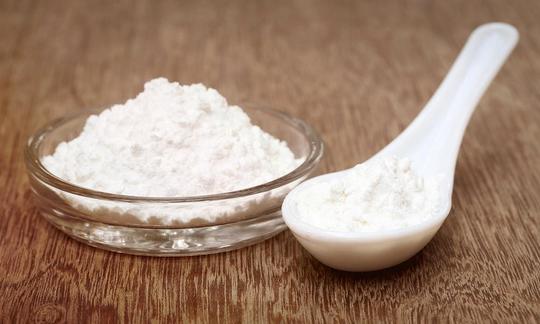

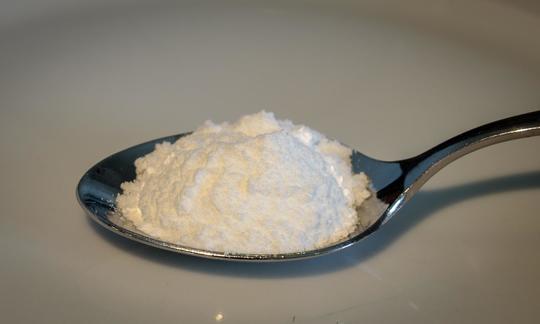

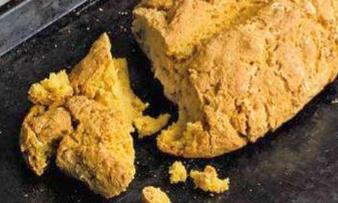

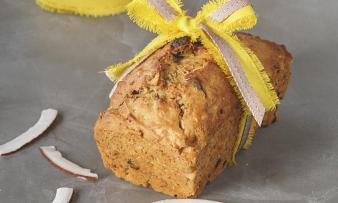

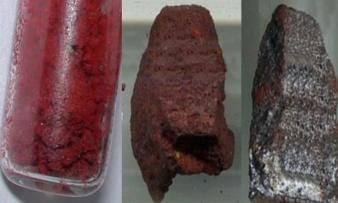



Comments